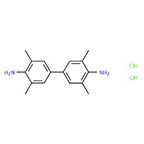Acetone (C3H6O)
1-Ethylpiperidine, 99%, Acros Organics™
10LT 1-Ethylpiperidine, 99%
Acetone, >95%, technical, ACROS Organics™
Chemical Name or Material: Acetone Molecular Formula: C3H6O Formula Weight: 58.08 Synonym: 2-Propanone Purity Grade: Technical 5LT Acetone, technical
Acetone, 99.5+%, for analysis, ACROS Organics™
Chemical Name or Material: Acetone Name Note: For analysis CAS: 67-64-1 CAS Min %: 99.5 CAS Max %: 100.0 Purity Grade: For analysis Assay: ≥99.5% Assay Percent Range: 99.5+% Molecular Formula: C3H6O Linear Formula: CH3COCH3 Formula Weight: 58.08 MDL Number: MFCD00008765 Synonym: 2-Propanone 2.5LT Acetone, 99.5+%, for analysis
3,3',5,5'-Tetramethylbenzidine dihydrochloride hydrate, 98+%, Acros Organics™
5GR 3,3',5,5'-Tetramethylbenzidine dihydro
Isopropanol (45%), Acetonitrile (45%), and Acetone (10%), Flush Solution or Mobile Phase Solvent Blend
1LT Mobile phase blends (45% IPA + 45% ACN + 10% acetone), Optima(TM) LC/MS grade
Acetone, Honeywell™
1LT Acetone tested according to Ph.Eur.
Acetone, puriss. p.a. ACS Reagent, Honeywell
Beilstein: 635680 CAS: 67-64-1 Chemical Name or Material: Acetone Density: 0.791g/mL at 25°C Assay: ≥99.5% (GC) Formula Weight: 58.08g/mol Purity Grade: puriss. p.a. ACS Reagent Explosion Limit: 0.132 Flash Point: −17°C (1.4°F) Linear Formula: CH3COCH3 MDL Number: MFCD00008765 Name Note: Reag. Ph. Eur. reag. ISO UN Number: 1090 Vapor Density: 2 (vs air) Vapor Pressure: 184mmHg (20°C) 2.5LT Acetone puriss. p.a., ACS reagent, reag. ISO, reag. Ph. Eur., =99.5% (GC)
Acetone, For pesticide residue analysis, Honeywell Riedel-de Haën™
Beilstein: 635680 CAS: 67-64-1 Chemical Name or Material: Acetone Density: 0.791g/mL at 25°C Assay: ≥99.8% (GC) Color: Colorless Formula Weight: 58.08g/mol Purity Grade: CHROMASOLV™ Explosion Limit: 0.132 Flash Point: −17°C (1.4°F) Linear Formula: CH3COCH3 MDL Number: MFCD00008765 UN Number: UN1090 Vapor Density: 2 (vs air) Vapor Pressure: 184 mmHg (20°C) 1LT Acetone CHROMASOLV for pesticide residue analysis
Acetone, Puriss., meets analytical spec. of BP, NF, Ph. Eur., ≥99% (GC), Honeywell Riedel-de Haën™
Beilstein: 635680 CAS: 67-64-1 Chemical Name or Material: Acetone Density: 0.791g/mL at 25°C, 0.790 to 0.792g/mL at 20°C Assay: ≥99% (GC) Formula Weight: 58.08g/mol Purity Grade: puriss. Explosion Limit: 0.132 Flash Point: −17°C (1.4°F) Linear Formula: CH3COCH3 MDL Number: MFCD00008765 Name Note: Meets analytical specification of Ph. Eur.BP, NF UN Number: 1090 Vapor Density: 2 (vs air) Vapor Pressure: 184mmHg (20°C) 2.5LT Acetone puriss., meets analytical specificat ion of Ph. Eur., BP, NF, =99% (GC)
Acetone CHROMASOLV™, for HPLC, ≥99.8%, Honeywell Riedel-de Haën™
Beilstein: 635680 CAS: 67-64-1 Chemical Name or Material: Acetone Density: 0.791g/mL at 25°C Assay: ≥99.8% Boiling Point: 56°C/760mmHg Formula Weight: 58.08g/mol Melting Point: −94°C Purity Grade: CHROMASOLV™ Linear Formula: CH3COCH3 MDL Number: MFCD00008765 Molecular Formula: C3H6O Name Note: for HPLC Refractive Index: n20/D 1.359 Vapor Density: 2 (vs. air) Vapor Pressure: 184mmHg (20°C) X6 Acetone CHROMASOLV®, for HPLC,
Acetone, Histological Grade, ≥99.5%, Honeywell
Density: 0.791 g/mL at 25 °C(lit.) Explosion Limit: 0.132 Flash Point: −17°C Linear Formula: CH3COCH3 MDL Number: MFCD00131369 UN Number: UN1090 Assay: >99.5% Formula Weight: 58.08 Purity Grade: Histological Grade Chemical Name or Material: Acetone Beilstein: 635680 Boiling Point: 55 to 57°C Melting Point: −94°C(lit.) Refractive Index: 1.359 500ML Acetone histological grade, =99.5%
Ambion™ 0.5-10 Kb RNA Ladder
Suitable for sizing single-stranded RNA ranging from 0.5kb to 10kb in glyoxal or formaldehyde agarose gels 25 RXN RNA LADDER 25 APPLICATIONS STORE AT -68Cto -85C
![]()
Synonyms: Propan-2-one, Dimethyl ketone, Dimethyl carbonyl, β-Ketopropane, Propanone, 2-Propanone, Dimethyl formaldehyde, Pyroacetic spirit (archaic), Ketone propane
CAS: 67-64-1
Acetone is a colorless, volatile, flammable liquid, and is the simplest ketone. Acetone is miscible with water and serves as an important solvent in its own right, typically for cleaning purposes in the laboratory. It is a common building block in organic chemistry. Familiar household uses of acetone are as the active ingredient in nail polish remover, and as paint thinner.







